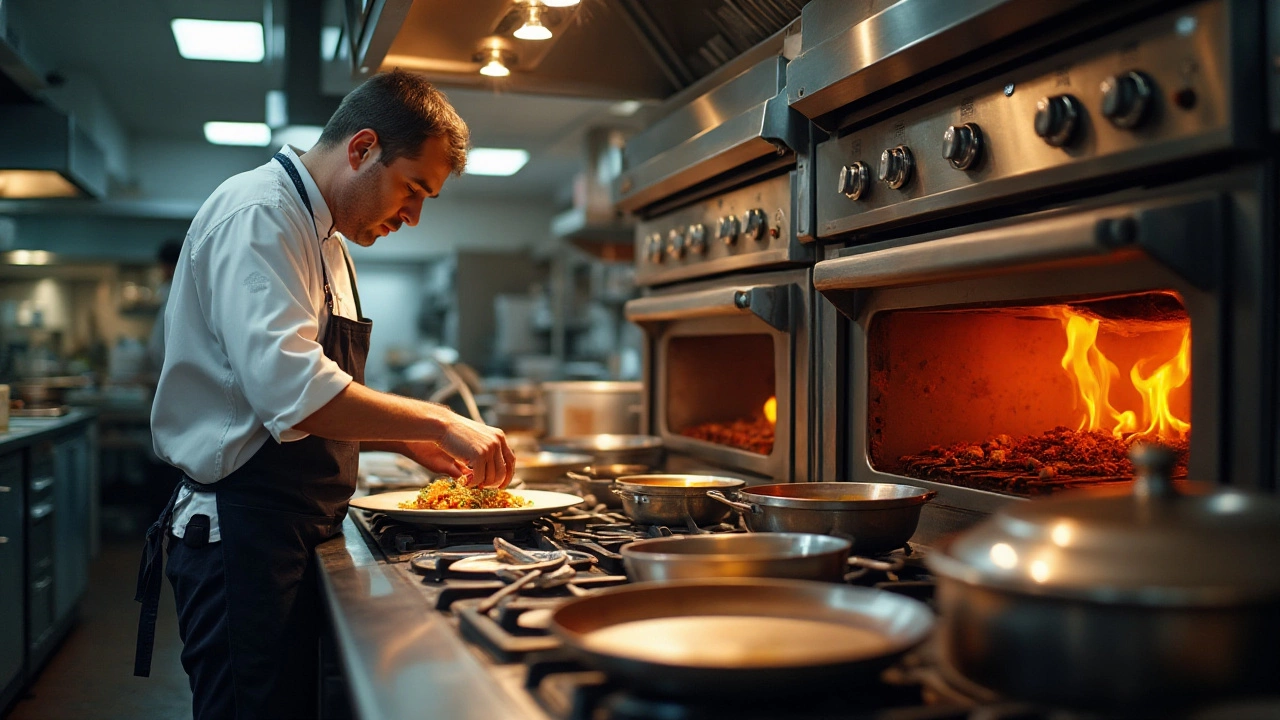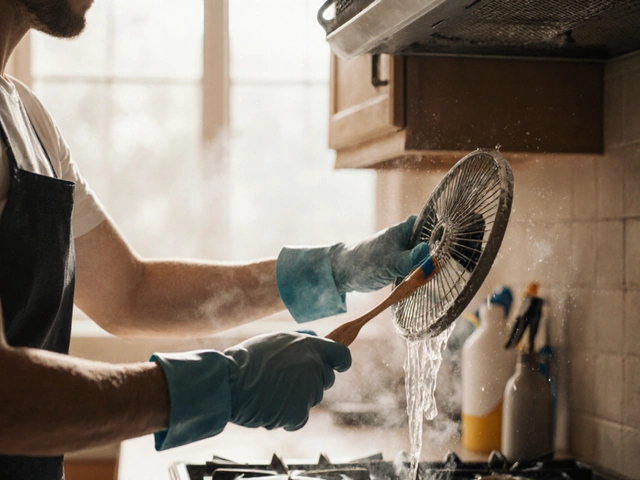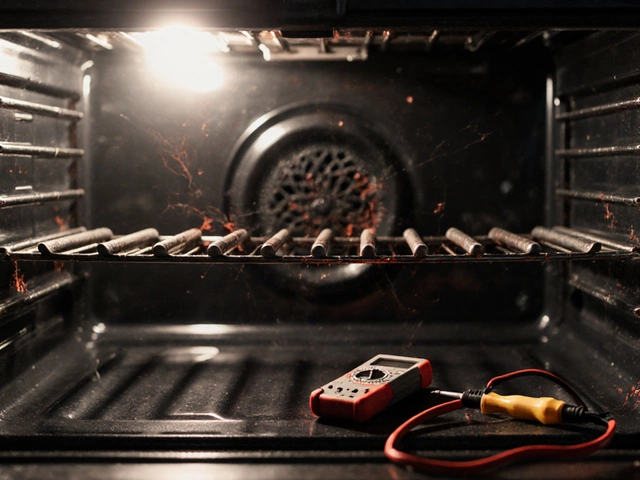When wandering through the aisles of a home goods store, it's easy to be enticed by the gleaming promise of a pressure cooker. They boast quick cooking times, efficiency, and versatility. Yet, if you're imagining the depths of a high-end professional kitchen, you'll rarely find one of these devices in use. Why is it that chefs, who strive for excellence with every dish, often opt for more traditional methods over this time-saving gadget?
It turns out, the world of professional cooking is as much about artistry and technique as it is about putting food onto a plate quickly. Throughout this article, we'll explore the various reasons chefs may shy away from pressure cookers, examining their preference for more manual, time-honored techniques that allow for controlled, nuanced cooking.
Understanding these choices sheds light not only on the culinary artistry involved but also provides a new perspective on the balance between convenience and quality in cooking. Whether you're a home cook wondering where to invest in kitchen tools or an aspiring chef looking to hone your craft, there's much to learn from the professionals' seemingly old-fashioned approach.
- The Perception of Pressure Cookers in Professional Kitchens
- Quality Control and Precision Cooking
- Flavor Development and Culinary Techniques
- Versatility of Traditional Cooking Methods
- Time Constraints vs. Creative Process
- When Chefs Do Turn to Pressure Cookers
The Perception of Pressure Cookers in Professional Kitchens
In the bustling arena of professional kitchens, where precision and technique dance in harmony to create culinary masterpieces, the trusty pressure cooker often finds itself sidelined. While at home it may hold a place of honor, providing swift answers to the timeless question of 'what's for dinner?', chefs often view it through a different lens. The reputation of pressure cookers among professionals is tinged with skepticism. This reluctance stems partly from a belief that in exchange for speed, one sacrifices control and nuance – two critical components in professional cooking.
Many chefs emphasize the importance of control over each stage of their cooking process. With a pressure cooker, the high-pressure environment and sealed nature mean you have less chance to intervene and adjust flavors as they develop. Traditional stovetop methods allow for continuous tasting and modifications, which is key when crafting complex flavors. Culinary experts like renowned chef Thomas Keller believe that true mastery comes from understanding and engaging with the cooking process, something a pressure cooker might deprive them of.
"Cooking is about understanding the raw ingredients and transforming them through your senses," Chef Keller noted in a culinary seminar. "A pressure cooker sometimes feels like passing the baton to automation instead of indulging in the process ourselves."
For chefs, this process is where creativity flourishes, and the artistry of cooking shines. The lack of control in a pressure cooker can mean missing out on developing those subtle layers of taste that transform simple ingredients into extraordinary dishes. The flavor development achieved through traditional techniques—like sautéing, simmering, and roasting—can be critical, especially in fine dining where guests expect a symphony of flavors, not just a well-done note.
Another reason for this perception is rooted in tradition. Many of the methodologies taught in culinary schools place great emphasis on classic techniques. This foundation prepares chefs to understand their craft deeply. Immersive training molds their skills around stovetop and oven craft, and branching out to devices like pressure cookers feels almost like bypassing generations of culinary evolution. They are seen as tools that perhaps compromise the intricate dance that textures and timings create when using tried-and-true methods.
Nonetheless, it is not that chefs consider pressure cookers to be without merit. They acknowledge their efficiency and the quality they can provide when used wisely. Yet, for many, it's about the hands-on experience and sensory involvement that allows them to create culinary art tailored to perfection. This perspective can significantly impact their decision to lean on more tactile methods that let them connect with every element of the dish they are creating. In essence, while the pressure cooker offers numerous benefits in the home kitchen, in professional circles, it remains a tool utilized in specific contexts rather than an everyday staple.
Quality Control and Precision Cooking
When exploring the art of cooking, the concept of quality control takes center stage. Chefs are meticulous about precision, an aspect that becomes challenging with the nature of a pressure cooker. These devices are typically designed for speed, operating under high pressure that cooks food swiftly. While this sounds ideal for quick meals, it can compromise on some critical factors that professional chefs deeply care about: texture, consistency, and the ability to refine dishes as they cook. The beauty of traditional methods lies in constant monitoring, where adjustments can be made, and flavors fine-tuned as the dish matures. With a pressure cooker, everything is sealed shut, leaving no room for mid-course corrections.
Precision cooking often relies on tactile feedback which gets lost in a sealed environment. The ability to see, touch, and smell during different cooking stages is invaluable. Let's think about making a beef stew. A chef will watch as the beef browns, releasing specific aromas indicating the Maillard reaction has reached its peak. This level of sensory engagement is critical for achieving the desired outcome and is why many chefs turn away from convenience in favor of control. According to Eric Ripert, a recognized culinary maestro, "Cooking is not just about the taste; it's about the journey, and each moment in that journey adds a layer of complexity to the dish."
There's also the aspect of calibration. Professional kitchens maintain precise control over temperatures and cook times, a standard sometimes difficult to replicate with the generic settings of a pressure cooker. Whether it's sous-vide or simmering, chefs thrive on tuning the little knobs of time and temperature to achieve what they envision. This tailored approach becomes difficult when using any one-size-fits-all device. Instead, many prefer equipment that offers nuanced control, like induction stoves and convection ovens, where they can tweak the cooking environment to their exact needs. Engaging with dishes on a granular level ensures that the outcome not only meets standards but often exceeds them, presenting flavors and textures in a way that is consistent and reliable every time.
Statistics from culinary institutions show that traditional methods of cooking yield a higher level of precision and consistency in professional settings. An interesting fact reflects this: in surveys conducted at various culinary schools, over 80% of chefs preferred traditional methods for consistency in taste and texture. This data underscores the chefs' dedication to maintaining control over their creations without the intervention of automatic measures to finish foods. Whether it's the gentle simmer of a stock or the precise poaching of an egg, these methods lend themselves better to the stringent standards set within the professional kitchen.
In weighing speed against quality, chefs often settle on equipment that lets them express creativity and precision together. They regard pressure cookers as an excellent tool for home cooks seeking time-savings but view them as restrictive within the professional environment where crafting each element with intention is key. So, when considering the complexity of a professional kitchen, choice of equipment goes beyond convenience; it connects with the essence of culinary art where meticulousness meets expression.
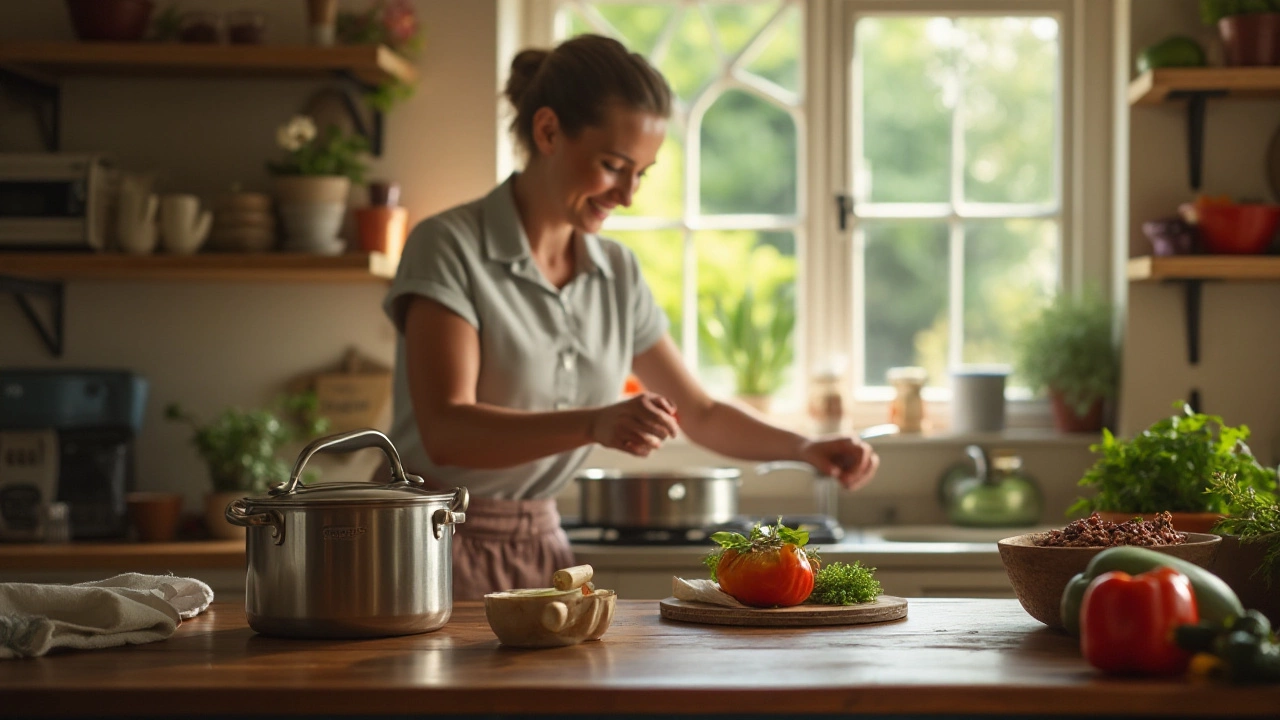
Flavor Development and Culinary Techniques
Culinary professionals know that flavor is the soul of a great dish, and the development of flavor often requires time, patience, and a little bit of magic. This process of coaxing out layers of rich taste through traditional methods is something that a pressure cooker, with its focus on speed, can't quite replace. The Maillard reaction, for instance, is a cornerstone of flavor creation. It involves chemical reactions between amino acids and reducing sugars that give browned food its distinctive flavor. This reaction requires precise heat control and time, elements that are often compromised in the high-pressure environment of a pressure cooker.
Chefs often rely on methods such as sautéing, roasting, and braising to deeply develop flavor. Each technique has its unique way of unlocking an ingredient’s potential. Sautéing brings out lively, bright flavors, while roasting builds earthy, caramelized notes. Braising balances moisture and texture with a slow cook that mingles flavors over hours. In contrast, a pressure cooker seals ingredients off from such transformative processes by cooking them rapidly at high pressure, potentially leaving them with less nuanced flavor profiles.
Moreover, culinary techniques aren’t just about the result – they’re part of the ritual. The slow turning of a stew, the delicate flip of meat in a pan, these are stories in motion, unfolding in sync with the ingredients. A stovetop, with its ability to apply heat evenly and its open accessibility for tasting and adjusting, allows for intimate interaction with food. It's an interaction that, for many chefs, a pressure cooker minimizes, as its enclosed nature restricts the tactile engagement that is vital to professional cooking.
The Balance of Science and Art
In professional kitchens, the science of cooking often blends seamlessly with the art. Chefs are both scientists and artists, orchestrating environments where ingredients can naturally evolve in flavor. Joan Roca, a chef at the **El Celler de Can Roca**, once noted, "Cooking is a language that expresses harmony, creativity, happiness, beauty, poetry, complexity, magic, humor, provocation, and culture." This harmony involves balancing precision with intuition. While pressure cooking is a marvel of engineering, offering rapid transformation of raw ingredients into edible forms, its rigid structure can, at times, clash with the organic flow of artistic creativity.
In open cooking methods, a chef can make minute adjustments in real-time, tasting as they go, which is invaluable in crafting the subtlety and depth in taste that high-end culinary experiences demand. In contrast, when set to its task, a pressure cooker cannot be altered until its cycle completes. For those who immerse themselves in the intricate dance of cooking, where each adjustment is a brushstroke on the canvas of flavor, such constraints can be stifling.
Versatility of Traditional Cooking Methods
Professional chefs often lean on traditional methods of cooking because of their unparalleled versatility. Techniques such as roasting, sautéing, and braising give chefs the ability to exert precise control over the texture and flavor profile of their dishes. These methods not only permit a more nuanced development of taste but also allow for spontaneity and innovation that a pressure cooker might not accommodate. Say you're preparing a classic dish like coq au vin; slowly simmering the chicken in wine allows the flavors to meld over time, a contrast that allows the natural richness of the wine and herbs to become fully infused into the meat.
There's an element of craft involved, an engagement with each step, each adjustment of heat—a relationship with the dish that is inherently tactile. Chefs may adjust ingredients and techniques on the fly, responding to how ingredients behave, an interaction that sets the path for creativity.
“The beauty of cooking without constraints lies in the dance of flavors and textures,” remarked renowned chef Thomas Keller, emphasizing the untethered artistry afforded by traditional methods.In contrast, while pressure cooker recipes are efficient, they can sometimes feel rigid, binding chefs to a specific sequence of actions without room for adaptation.
Moreover, traditional methods afford chefs the capability to multitask and prepare multiple components of a dish simultaneously. While a sauce slowly reduces on one burner, a chef might be browning meat on another, a dance of culinary creation that wouldn't be possible if every step required sequential pressure cooking. They can often gauge doneness just by listening to the sizzle or feeling the meat's texture with their fingers, skills honed over years that connect them intimately with the ingredients they use. This interaction culminates in an intuitive sense of timing and taste—something no automated pot could replicate.
From an educational standpoint, aspiring chefs learn through these methods, because they demand familiarity with fundamental cooking principles; the Maillard reaction, for instance, describes the chemical change that occurs when proteins are browned—a crucial aspect of taste development. In fact, many culinary schools emphasize these principles before introducing students to more modern appliances, ensuring a robust foundation of knowledge. Providing a table that breaks this down can be seen often in culinary education:
| Cooking Method | Flavor Development | Time Required |
|---|---|---|
| Roasting | Caramelization; robust flavors | 1-3 hours |
| Sautéing | Browning; quick intensity | 5-20 minutes |
| Braising | Melding; deep, rich depth | 2-4 hours |
By deeply engaging with these traditional methods, chefs not only enhance their dishes but develop a rich, historical appreciation for how cooking has evolved. This knowledge then influences the comforting, trusted authenticity behind each dish they prepare, bringing the past into the present with every plate served. It's about embracing the journey of each meal from raw ingredient to perfect bite, crafting the experience as much as the food itself.
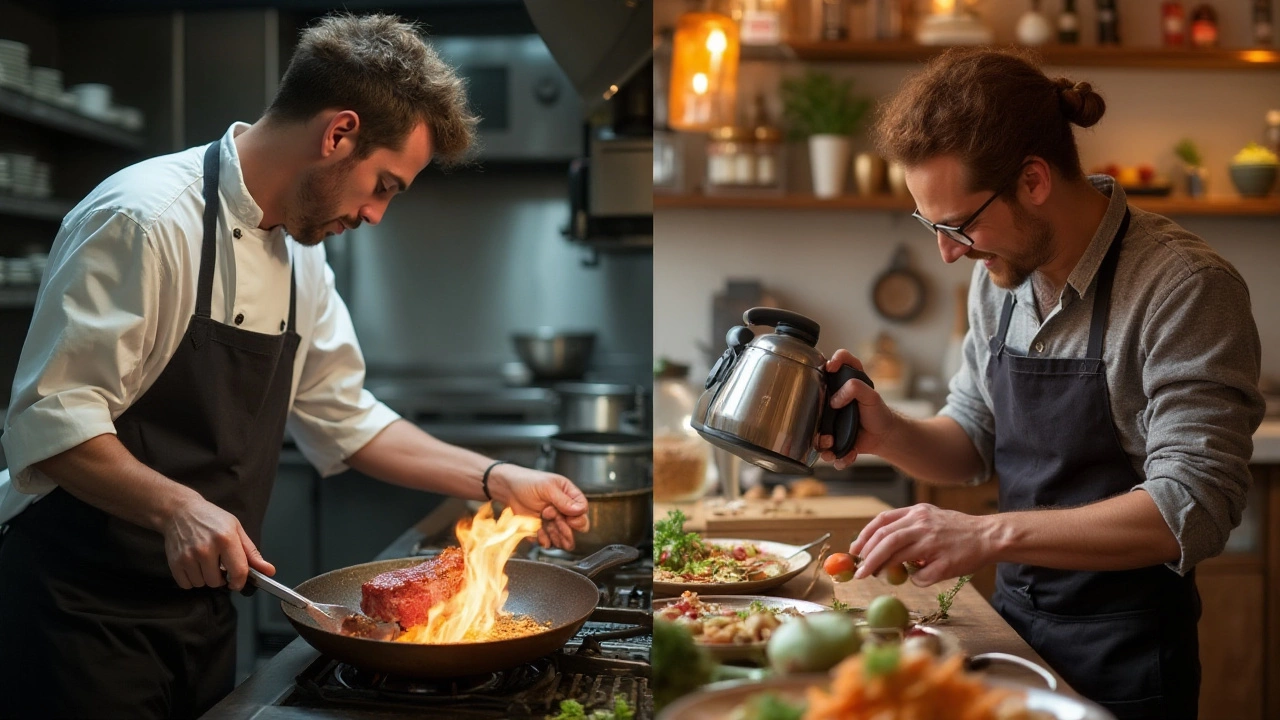
Time Constraints vs. Creative Process
In the breakneck pace of a busy restaurant kitchen, time often feels like both an enemy and a friend. A chef's ability to manage this fickle ally can define the success or failure of a service. While a pressure cooker might offer a seductive promise of cutting down on cooking time, many chefs see it as less of a true friend and more as a fair-weather acquaintance. This contraption works under high pressure and heat to produce tender results in a fraction of the time, but its speed sometimes comes at the expense of a process that chefs hold dear: the creative unfolding of flavors through traditional methods.
Cooking, to many top chefs, is akin to creating a symphony. Each ingredient, like each note, must be coaxed and nurtured into its fullest potential just as a conductor guides an orchestra. This is hard to achieve with a device that can rush through the process. Pressure cookers, with their fast-paced technique, can limit the chef's control over subtle and intricate changes in texture and taste, which can only be developed through time. The deliberate browning of meat in slow cooking, the gentle simmering of sauces, even the mindful reduction of a stock, all contribute layers of complexity that are impractically compressed in high-pressure environments.
Surprisingly, time itself in a kitchen isn't just about the ticking hands of a clock but rather an investment in depth and richness. Many chefs would argue that the minute details, achieved through time-taking methods, are much of what elevates good food to great food. Thomas Keller, a world-renowned chef, states in his book The French Laundry Cookbook, "Cooking demands attention, patience, and above all, respect. The ingredients cannot speak, but as a cook, you must be able to listen."
Culinary skills are honed not just through ingredient knowledge but by understanding and responding to these subtle cues over time.
Chefs also embrace the creativity that longer cooking methods allow. Traditional techniques give them the opportunity to innovate, adapting textures and flavors in ways the predictability of a pressure cooker might not. Innovation doesn't always adhere to a timetable; sometimes, the unexpected and delightful occurs when one allows time to unfold naturally. The artistry found in cooking is often in perfecting techniques rather than circumventing them, and this is where traditional cooking practices shine.
While some might argue that using a pressure cooker in a fast-paced kitchen could help a chef meet immediate demands, it is important to remember that not all foods are suited for such high-speed preparation. The time constraint often associated with a pressure cooker can also stifle the spontaneity that chefs thrive on. Yet, when the pressure is on, and service is in full swing, some chefs might make use of this tool—particularly when preparing stocks or beans that require minimal flavor layering. This careful balancing act is proof of a seasoned chef's experience, knowing when speed is necessary and when patience pays off.
For diners, understanding these processes can lead to a greater appreciation of not only the meal itself but the dedication and craft behind it. For home cooks aspiring to mimic professional kitchens, it's a valuable lesson that while speed can be advantageous, techniques cultivated through time have a place in creating dishes that are not just tasty but memorable. Emphasizing the harmony between time and creativity is key to capturing the essence of what makes professional cooking truly exquisite.
When Chefs Do Turn to Pressure Cookers
It’s not common knowledge, but there are moments when even the most traditional chefs, known for their meticulous methods, will surprise you by incorporating a pressure cooker into their culinary repertoire. This usually happens in the buzz of a bustling kitchen where the demands are unrelenting, and every second counts. While they might not rely on it for their signature dishes, the pressure cooker can become an unassuming ally for specific tasks that require speed without sacrificing a certain level of quality.
One scenario where chefs might turn to this marvel of kitchen engineering involves the preparation of stocks or broths. Traditional methods of simmering stocks can take hours to fully extract flavors, a luxury not always afforded in a fast-paced kitchen environment. By using a pressure cooker, chefs can expedite the process significantly, reducing the cooking time by more than half while still drawing out essential flavors from bones and vegetables. This ability to deliver depth and complexity in a fraction of the time can be invaluable during a rush of orders.
Another occasion for its use is in conserving the tenderness of tough cuts of meat. Creating succulent pulled pork or meltingly tender beef can be labor-intensive and time-consuming when done conventionally. The pressure cooker excels here by breaking down collagen in tough meats quickly, which can enhance the texture to perfection when time is tight. It saves not just hours of waiting but also helps in maintaining a consistent quality that a chef can rely upon service after service. Celebrity chef Gordon Ramsay has commented, "A well-used pressure cooker is like having an extra pair of hands in your kitchen," offering insight into how industry giants perceive its utility.
It's also notable that in recent years, chefs involved in haute cuisine and culinary experimentation have shown interest in using pressure cookers for their precision and ability to confine flavors. This can be particularly advantageous in creating infusions or concentrating flavors without losing aromas to the air. Some Michelin-starred kitchens have been known to employ them as part of their molecular gastronomy toolkit, looking to push the boundaries of traditional cooking techniques.
"In the kitchen, every tool has its time and place. Knowing when to use a pressure cooker can elevate dishes in surprising ways." – A famous chef once remarked, encapsulating the strategic yet careful adoption of this technique.
While not an everyday choice, these scenarios illustrate why a pressure cooker might earn a place even in a professional chef's arsenal under the right conditions. It's not about replacing traditional methods, but rather supplementing them, allowing chefs to adapt to various challenges while still offering high-quality results to their patrons. Understanding these nuances helps demystify why in certain busy moments, beneath the clamor and clang of a busy kitchen, you might just hear the quiet hiss of a pressure cooker doing its extraordinary work.
